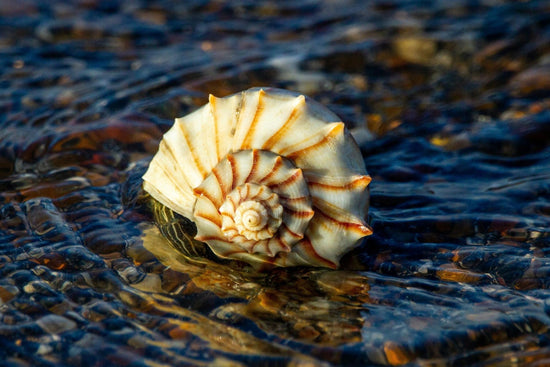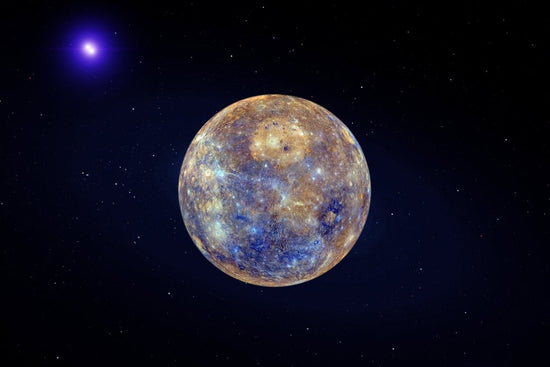Imbolc is The Beginning of the End… of Winter.
Imbolc - like all sabbats on the Wheel of the Year - celebrates our terrestrial relationship to the sun, the element of fire, and our position in the annual cycle of life, death, and rebirth. This quiet, cross-quarter holiday takes place at the midway point between the winter solstice (Yule) and the spring equinox (Ostara). It has long been recognized as the beginning of the end of winter, marked by the first perceptible elongation of daylight.
Imbolc is the time of year our agrarian ancestors would be seeing the first signs of new life, signaling that the barrenness of winter and the dependance on what’s been stored away is nearly over. It is a time of awakening, of the first, deep rustlings of rebirth, and of the cool, soft light that bends around the planet before the sun climbs over the horizon into view.

The etymology of the word Imbolc is debated, but the most common explanation is that it comes from a similar Old Irish word meaning “in the belly” which most likely refers to the pregnancy of ewes this time of year, as the promise of new life is a major theme of Imbolc. For ancient peoples, the first full udders of the year meant the first fresh food in months! It’s the time of the year associated with gestation and birth, and the time to honor the fertility goddess Brigid in her Maiden form.
Brigid's Day
Brigid is the Celtic Goddess of poetry, divination, fertility, and handicraft. So all of you crafty artists out there should consider paying homage to this creative sister. As a triune goddess who was revered in Scotland, Wales, and across Western Europe, along with her sisters also named Brigit, or Brigid. Research based on the Sanas Cormiac speculates that the name "Brigid" is applied to a number of female deities and to be more of a title than an individual. She appears as Maiden, Mother, and Crone throughout the year, mirroring the cycle of life, death, and rebirth experienced annually by the planet. She is credited as the goddess of fire, forge, and flame, change and transformation, poetry and inspiration, education and learning, metalworking, healing, creativity, wisdom, prophecy, fertility, and childbirth.
With the spread of christianity, Brigid was canonized and put forth as a midwife to Mary. In this way, the Catholic church was able to preserve her association with childbirth. Unlike many of her contemporaries, Brigid survived the Christianization of the region and is still widely recognized today, even shedding her mantle of Saint and widely reclaiming the title of goddess in modern pagan circles.
Fittingly, this resurgence of Brigid the goddess mirrors a resurrection yet again, from death to rebirth, from crone back to maiden.
Honoring Brigid
To celebrate Imbolc, many modern day pagans focus on celebrating Brigid. They may do this by setting up an altar with symbols that honor Brigid like corn husk dolls, white flowers, a bowl of milk, fresh bread, or candles. It is also customary to light every lamp in the house, or a candle in every room (even if just for a few minutes) just after sunset in honor of the sun’s rebirth.

The “Brigid's Cross” is one of the archetypal symbols of Ireland, and while it may be considered a Christian symbol it seems to have its roots in the pre-Christian goddess Brigid. It is usually made from rushes and is woven into a four pointed shape with a square at the center. The crosses may be hung above doorways to bless and protect the home or taken door to door by young children as a blessing. Crosses woven for Brigid at Lugnasadh (Lammas) during her transition from Mother to Crone may be stored and brought back out at Imbolc as a representation of her rebirth from Crone to Maiden at this time of year.
Other early celtic celebrations included lighting fires to warm the frozen land and practicing weather divination as a way to predict the future. Speaking of which…
A Fun Fact About Groundhog's Day
In these waters, February 2nd may best be known as Groundhog Day: the occasion upon which we elect a woodchuck to determine how wintery the rest of winter will be. The way it’s told, if the groundhog “sees his shadow” and is scared back into his hole, we're in for a few more weeks of winter weather. But if it's cloudy and there's no shadow to spook the little guy, it means spring is coming early!

This whimsical observance mirrors a Celtic tradition surrounding Imbolc. Pagan Celtic lore holds that if the weather is bright and sunny on Imbolc, it means Cailleach - Brigid in her Crone form - must be out gathering firewood to keep herself warm over the coming weeks. But, if the day is overcast or stormy it means that Cailleach is sleeping in, unworried about her store of firewood because she knows the harsh weather will soon yield to spring.
We Begin Again
Just as the goddess Brigid is transformed back into her Maiden aspect, just as the Earth begins to wake from its winter slumber yet again, so too do we greet the dawn of spring with renewed life. The Imbolc season is a time for genuine introspection that seeks to clear away what no longer serves us and to make way for what we are manifesting. Now is the time to prepare soil and plant seeds - both real and metaphorical - so we may begin nurturing them to fruition.
What seeds are you planting? How have you prepared the soil for their success? Can you feel the warmth of the sun a little earlier every morning? A bit later each night?
We are about to be reborn.
Celebrate Imbolc with our Limited Edition Incense
Our first sandalwood-forward scent blend recalls the warm earthiness of sun-baked straw, and those slanted shafts of dusty sunlight coming through the barn rafters a little later into each evening. With a supporting host of pure essential oils, Imbolc Premium Incense captures the quiet and introspective vibe of the season, the hopefulness of transformation, and the confidence to make it happen.
Check out Imbolc, our first new scent of 2023!







5 comments
I am ready to turn the wheel to Imbolc and I love how your scent represents it. For me, I return earlier than Brigid, to the Germanic Pagan time of Imbolc and nature. Your incense is a wonderful accessory to my rituals and celebrations. thank you!!!
I love! the imbolc scent. i love the krampus scent as well, and white lodge is my favorite of the non-seasonal scents. I really like the scents with woody focus. I came to the site today hoping to find an imbolc salve or lotion, maybe that can exist in the future? i would use it all the time. I really enjoyed reading this and the prior blog post.
Bought Quoth the Raven and now I’m back after learning about Imbolc and I still have time! Can’t ask for faster shipping and better customer service, and AMAZING products!
I came over to write a 5-star review on the incense I bought and stayed for the beautiful content. I’ll be back for more. Your site is a glittering mine of wonderful images and words. Thank you!
Loved this! I am so fascinated by the different yet similar versions of Feb 2 weather divination you find in various European folklore. The version of Groundhog Day we know here apparently came via German settlers in Pennsylvania (who used groundhogs because hedgehogs were not available like in the “old country”). Another rhyme from Britain goes “if Candlemas Day be fair and bright, winter will have another flight; but if Candlemas Day be clouds and rain, winter is gone and will not come again.” ps – you may want to update the photo – that’s a prairie dog _